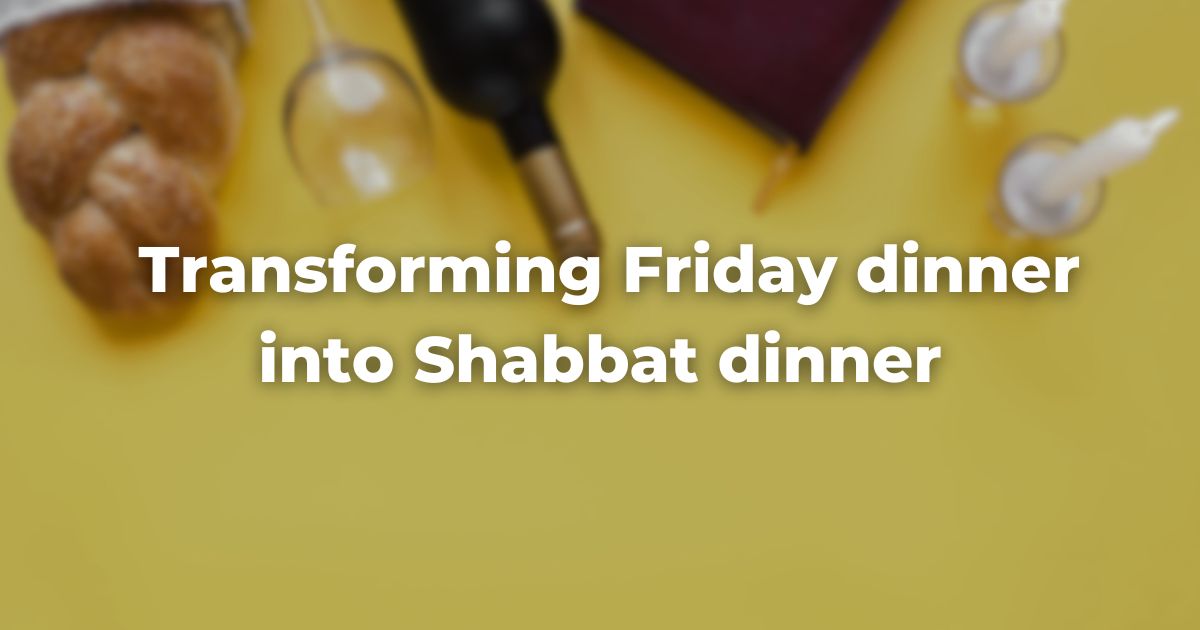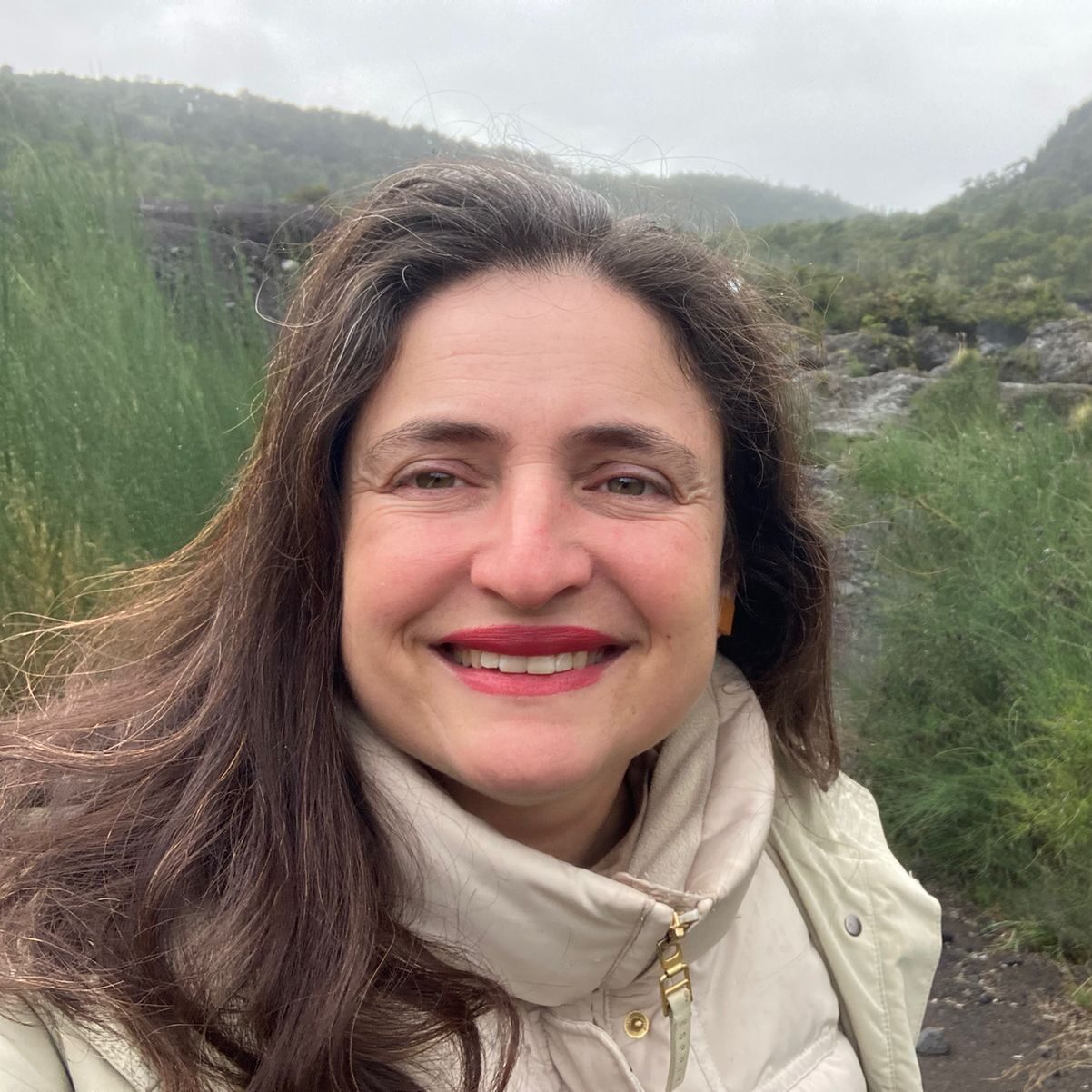The Jewish writer and journalist Ahad Ha’am said that: it was not the Jewish people who kept Shabbat, it was Shabbat which preserved the Jewish people. There is wisdom behind these words, and makes us think about what is so special about keeping one day of the week as sacred.
Celebrating Shabbat is establishing a limit between realms, a portal that brings us into 24-hour to detox from technology and from our routines. The entrance to this weekly gift of joy and rest is the Friday evening Shabbat dinner, a moment that should start with gratitude and end with it.
Shabbat dinner step-by-step
The practical elements that distinguish a Shabbat dinner from a “normal” dinner are the two loaves of challot (braided bread), the kiddush cup for the wine, and two candlesticks. Men — and in some communities women as well — wear a kippah or head covering. The tablecloth is usually white and also the candles, to represent the purity of Shabbat. Most of these elements are also present in other festive occasions.
A special Shabbat blessing is said lightning candles, although in winter times this is being done quite early, before the guests arrive for the dinner, as Shabbat starts at sunset. Exact times for candle lighting can be found here. The wine is blessed and everybody takes a sip or drink from their own cup. It is handy to give the guests small glasses with kiddush wine or grape juice, if they don´t drink alcohol or are underage.
Before the blessing of the challah, people are invited to wash their hands in a ritual manner, and it is traditional to stay quiet till the bread is being blessed. After everybody has received a piece of challah, it is almost time to start the festive meal, but not before calling the angels to sit on the table and to spark the room with holiness, by singing the beautiful and moving melody of Shalom Aleichem. It is also traditional to start with this song, to create an adequate mood, and then bless the win and bread.
Click here for a full overview on the Friday night Shabbat home rituals.
Festival of flavors
After the blessings and singing it is finally time to discover the flavors of Shabbat dinner, which can vary from one home to another, adapting to local and family tastes. In some families it is the day of the week for a meaty dinner, as eating meat is normally expensive and a luxury. For others it is time for fish, a symbol of life, and also because a parve (neutral) meal allows one to enjoy milky desserts. With the growth of vegan guests and lactose intolerance, some creative veggie options have evolved.
Guests can also contribute with their own recipes or drinks, but one should always get guidance from the host, depending if the menu will be meaty or parve. Guests can also be asked to contribute with flowers, as it is also traditional so enhance the table decoration with a nice flower bouquet.
The whole week around Shabbat
This gathering for family and friends helps us to connect with the festive and relaxing nature of Shabat. Nowadays, we only have the boundaries between the beginning of Shabbat, with the candle lighting and Shabbat dinner, and the end of it, with the havdalah; but traditionally, the whole week was oriented around Shabbat.
Traditionally, the whole week was about cooking, eating, and shopping for the Shabbat dinner and then around utilizing the leftovers of the Friday night meal. Wednesdays was market day. Thursdays, families would bake the challot and make other Shabbat dinner preparations. Fridays, was time to clean, cook and for preparing the cholent or adafina, a stew that was left cooking overnight. It was a teamwork, and everybody was excited about having guests, eating the best meal of the week, and staying up playing and singing.
A portal to holiness
If you are considering to re-establish this tradition with your family or friends, here are some aspects that you should consider. Some people like to attend the Kabbalat Shabat service at their local community before the dinner, so take that into consideration and discuss it in advance with your guests.
No matter how the menu is organized, the sense of a special evening prevails. When my kids were young, I introduced the tradition of the highlights of the week, and nobody could get to eat anything before mentioning at least one good thing that happened to them during the last 7 days, giving the Shabbat dinner an extra layer of gratitude.
Think in advance if you want to give the honor of some blessings to some of your guests. Maybe they would need to prepare in advance or if they are confident enough it just can be spontaneous. For many, Shabbat dinner is a very family oriented event, so people are expected to come with their children and partners. Start with the ones you feel most comfortable with and slowly you will increase your knowledge and skills for hosting.
The prayer after the meal, Birkat Hamazon, thanks G´d and expresses how grateful we are for what we had received on that table. And there is so much to be grateful for! The Shabbat table is imagined to be our modern altar, where we offer our prayers and food, to nourish our soul and body.
The Shabbat table is a table of joy, friendship, and companionship. It is a place to talk, share, and heal. In times where family and friends are more rare than ever, making our Shabbat table into a precious cradle of memories can be our best gift for the generations to come.
Author
-

Journalist. Msc. in Anthropology. She was a fellow in the first cohort of the Exploring Judaism's Writer's Fellowship. South American Rabbinical Student in Europe. Mother of two fantastic daughters. Love to practice yoga, meditate and to cook for family and friends. Currently doing research on food & identity for Phd on Jewish Theology at Paderborn University, Germany.
View all posts






